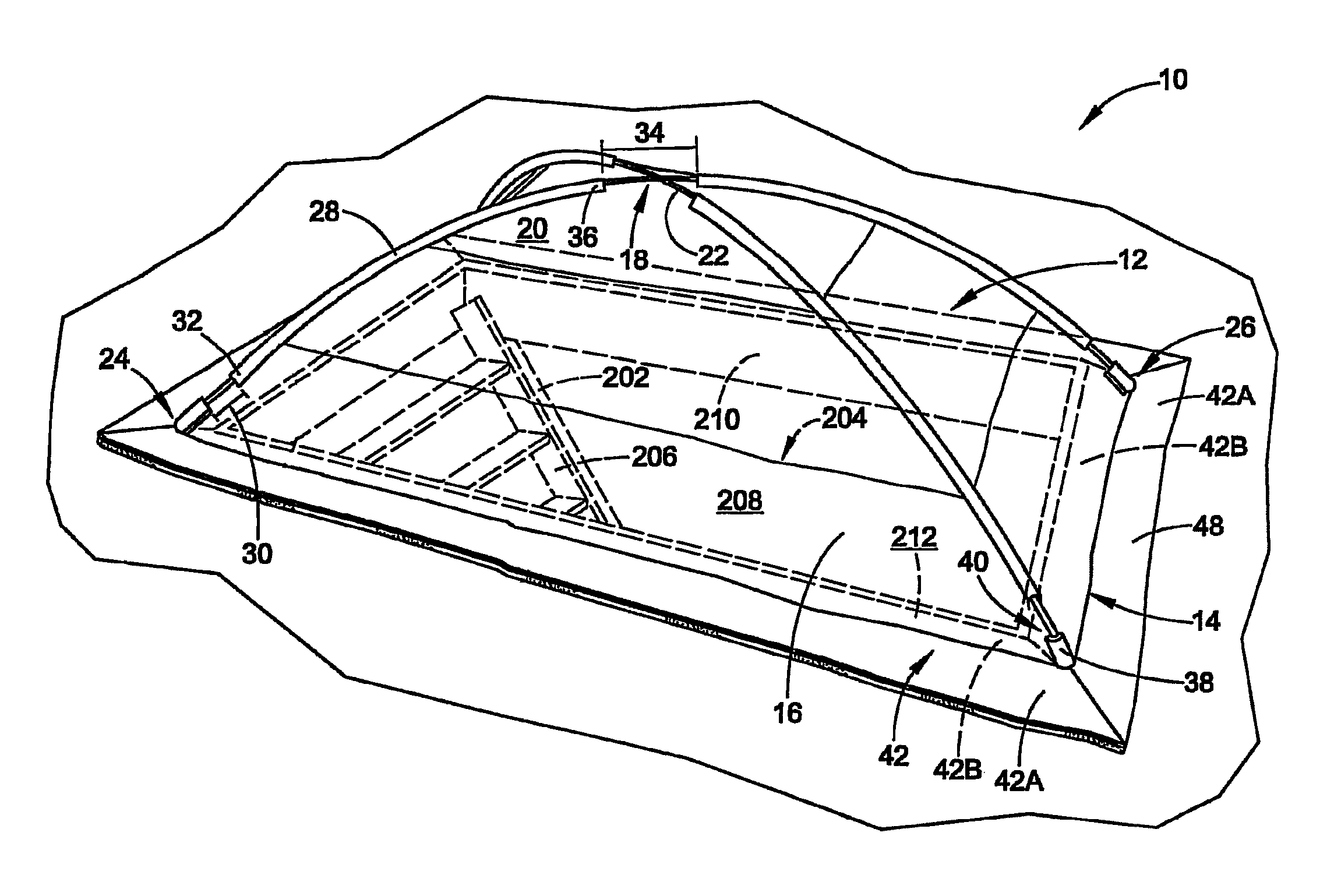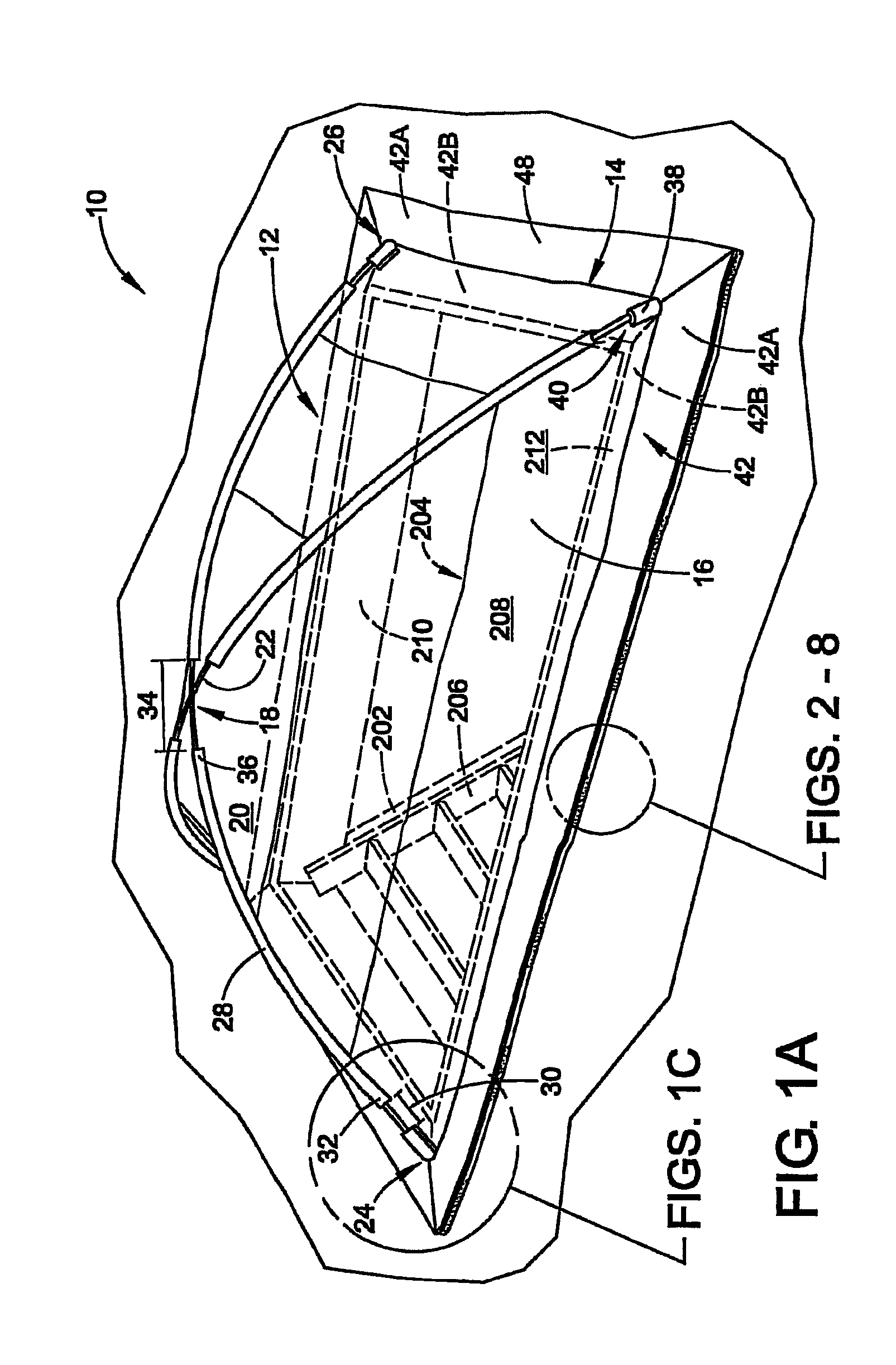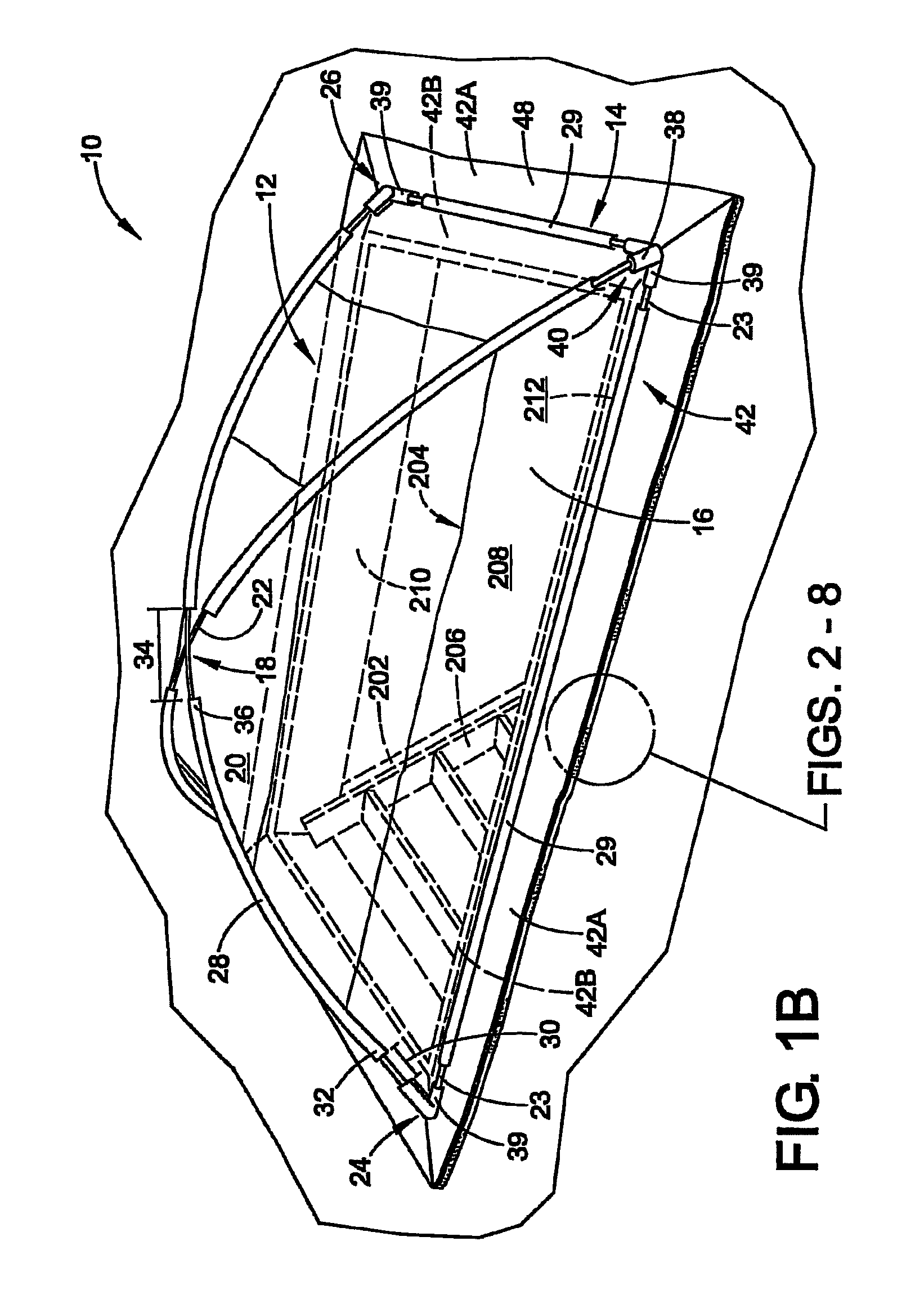Attic access door seal
a technology for attic access and door seals, which is applied in the direction of containers, applications, packaging goods types, etc., can solve the problems of insufficient insulation in most attic rooms, structure to suffer from undesirable energy loss, and temperature can significantly deviate from a controlled temperatur
- Summary
- Abstract
- Description
- Claims
- Application Information
AI Technical Summary
Benefits of technology
Problems solved by technology
Method used
Image
Examples
Embodiment Construction
[0022]The present disclosure relates to an insulating cover for an attic access panel. The embodiments herein are more specifically described for ceiling attic access panels. However, the features described herein may be similarly utilized or modified for use with a side-entry attic access. The insulating cover aims to insulate the access panel from transferring heat between a non-temperature controlled attic space and a temperature controlled living and / or working space. Accordingly, it is anticipated that the features and construction described herein may find equal application for insulating (single or multiple, sectional) panels and doors situated in other structures, such as, for example, garages, temporary storage units, closet spaces, and underground cellars, etc.
[0023]FIG. 1A illustrates a perspective view of an insulating cover 10 observed from an attic space. Most attics are made accessible by passage through an access panel or hatch 202, which includes a door hingedly con...
PUM
 Login to View More
Login to View More Abstract
Description
Claims
Application Information
 Login to View More
Login to View More - R&D
- Intellectual Property
- Life Sciences
- Materials
- Tech Scout
- Unparalleled Data Quality
- Higher Quality Content
- 60% Fewer Hallucinations
Browse by: Latest US Patents, China's latest patents, Technical Efficacy Thesaurus, Application Domain, Technology Topic, Popular Technical Reports.
© 2025 PatSnap. All rights reserved.Legal|Privacy policy|Modern Slavery Act Transparency Statement|Sitemap|About US| Contact US: help@patsnap.com



